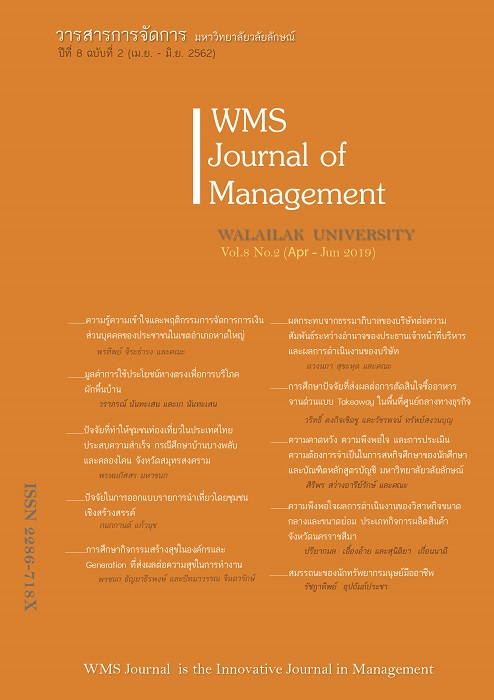Consumptive Use Value of Indigenous Plants
Main Article Content
Abstract
This paper investigates on evaluating the consumptive use value of indigenous plants of Maefak sub-district, San Sai district, Chiang Mai province. Value of the Gross Village Product (GVP) is applied. The empirical results of consumptive direct use value in 2015 present that the total value equals approximately 15 Million Baht including 2.971 Million Baht of roots/tubers plants consumption, 3.333 Million Baht of leaves/shoots/stalks/stems plants consumption, 2.421 thousand Baht of flowers plants consumption, and 8.556 Million Baht of fruits consumption. Therefore, to consume indigenous plants help reducing the household expenses equals 4,376.400 Baht per year. Promoting indigenous plants consumption is not only reducing the household spending but also solving the environmental problems according to no chemicals use in indigenous plants.
Article Details
References
Bejranonda, S. (2010). sētthasāt singwǣtlō̜m [Environmental Economics]. (1st ed.). Bangkok, Thailand: Kasetsart University Press.
Bookaew, S. (2009). kānpramœ̄n mūnlakhā kānchai prayōt phonphalit čhāk pā thī mai chai nư̄amai čhāk pā chumchon khōk yai ʻamphœ̄ wāpī pathum čhangwat Maha Sarakham [Use value evaluation of non-timber forest products from Khokyai community forest, Wapeepratum district, Mahasarakam province]. (Master’s Thesis, Mahasarakam University, Thailand).
Boonserm, T. (2007). kānpramœ̄n khā thāng sētthasāt čhāk kānchai prayōt khō̜ng pā chumchon bān sām khā čhangwat lam pāng [Economic valuation of use value of Ban-Samkha community forest, Lampang province]. (Master’s Thesis, Maejo University, Thailand).
Nunthasen, K. (2008). khwām temčhai yō̜m rap māttrā kānkā rō̜nu rak din læ nam khō̜ng kasēttrakō̜n nai phư̄nthī lumnam mǣ sāt ʻon bon čhangwat Chīang Mai [Willingness to accept soil and water conservation measures of farmers in upper Maesa watershed, Chiang Mai province]. (Master’s Thesis, Chiang Mai University, Thailand).
Nunthasen, K., & Nunthasen, K. (2017). khwām temčhai yō̜m rap kān chotchœ̄i samrap kānlot kānchai sān khēmī nai kān plūk khāo kānsưksā dōi withīkān thotlō̜ng thāng lư̄ak [The willingness to accept compensations for reduction in chemical usage in rice production: A choice experiment study]. University of the Thai Chamber of Commerce Journal Humanities and Social Sciences, 37(3), 76-89.
Prasertsak, W. (n.d.). Food security: Concepts and definitions. Retrieved from http://www.polsci.tu.ac.th/fileupload/36/24.pdf
Prasopkreatpoka, P. (2008). kānpramœ̄n mūnlakhā singwǣtlō̜m nai kāndūlǣ raksā mǣnam kūang ʻamphœ̄ mư̄ang čhangwat lamphūn [Environmental evaluation for Kuang river conservation Mueang District, Lamphun Province]. (Master’s Thesis, Chiang Mai University, Thailand).
Sullivan, C. A. (2002). Using an income accounting framework to value non-timber forest products. In: Pearce, D (Ed.) Valuation Methodologies. Edward Elgar, Cheltenham
Yotapakdee, T. (2014). Economic evaluation of non-timber forest products for benefits from Omkoi National Forest Reserve, Chiang Mai province. Area Based Development Research Journal, 6(4), 23-41.


